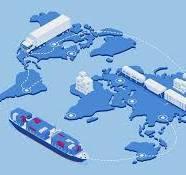Navigating the Global Gastronomy: A Deep Dive into Food Safety in the Global Supply Chain
Stanley Bangani![]() Invalid date
4 minutes, 7 seconds
Invalid date
4 minutes, 7 seconds
1.5K views 2 Likes
Introduction: In our interconnected world, the journey from farm to fork spans continents and involves a complex network of producers, processors, distributors, and retailers. As our plates become more diverse with globally sourced ingredients, ensuring food safety in the global supply chain has never been more critical. In this blog post, we'll explore the challenges and solutions surrounding food safety in the intricate web of the global food supply chain.
The Globalization of Food: The globalization of the food industry has brought an incredible variety of flavors to our tables, but it also introduces unique challenges in terms of food safety. Products sourced from different regions may be subject to diverse agricultural practices, environmental conditions, and regulatory standards.
Supply Chain Transparency: Transparency is the linchpin of a safe global food supply chain. To ensure safety from the farm to the consumer, it's crucial to have visibility into every stage of the supply chain. Technologies like blockchain are increasingly being used to provide real-time tracking and traceability, allowing stakeholders to pinpoint the origin and journey of each ingredient.
Regulatory Standards and Compliance: Navigating the diverse landscape of global food safety regulations can be complex. Companies operating in the global supply chain must stay abreast of and comply with various regulatory frameworks. Harmonizing standards across regions and countries can streamline compliance efforts and enhance overall food safety.
Risk Management and Contingency Planning: Identifying potential risks is a proactive approach to maintaining food safety in the global supply chain. Companies should conduct thorough risk assessments, considering factors such as climate conditions, transportation, and geopolitical events. Developing robust contingency plans ensures swift responses to unforeseen challenges.
Quality Assurance and Testing: Regular quality assurance testing is paramount to identify and mitigate potential risks. This includes testing for contaminants, pathogens, and adherence to quality standards at various points in the supply chain. Utilizing advanced testing technologies can enhance accuracy and efficiency.
Collaboration and Communication: Effective communication and collaboration among all stakeholders are essential components of a safe global food supply chain. This involves sharing information about best practices, emerging risks, and compliance updates. Collaboration fosters a collective commitment to food safety across borders. Consumer Education: Empowering consumers with knowledge about the importance of food safety and the efforts taken by the industry can contribute to a safer global food supply chain. Educated consumers make informed choices, exerting pressure on the industry to prioritize safety and sustainability.
Conclusion: As we savor the diverse array of cuisines made possible by the global food supply chain, it's crucial to acknowledge and address the challenges of ensuring food safety. Through transparent practices, compliance with standards, proactive risk management, and collaborative efforts, we can enjoy the benefits of a global gastronomic landscape without compromising on safety. After all, a truly global feast is one that is not only delicious but also safe for everyone at the table.
image source:https://www.food-safety.com/articles/8041-supply-chain-management-a-year-in-review

